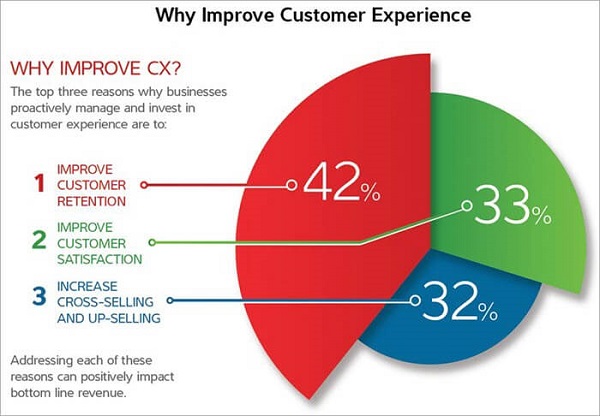
Introduction
Industry uses a variety of terms – Customer Experience Management, Customer Feedback Management, Conversational Intelligence, Voice of the Customer, or just CX – to describe the collection of processes a company uses to track, oversee and organize interactions between a customer and the enterprise throughout the customer lifecycle. Whatever the term, the need is real – different customer-facing enterprise departments require automated insight into customer interactions across different channels and areas of the business. Lacking such insight is a real problem in businesses of all sizes since the company is missing out on better customer experience, missing out on revenue up-sell opportunities, and missing out on increasing customer loyalty.
The problem is many conversational intelligence solutions available in the market today only offer point solutions that deliver specific insights, but do not accommodate a broad range of customer requirements and integrations, and rely solely on historical data sets rather than immediate insights that are frequently needed in the midst of a customer interaction.
In this article, we’ll explain how AI-driven “interaction analytics” represents a new and transformational technology that enables enterprise stake holders to turn customer interactions into a competitive advantage.

Department-level Requirements
The contemporary enterprise has a number of departmental-level requirements for interaction analytics. Specifically, every enterprise sees a plethora of customer interactions across business segments such as sales, marketing, product management, customer support, customer service, and professional services.
All of these departments are constantly interacting with customers, and it would be beneficial to apply AI to those conversations, e.g. voice calls, texts, email conversations, chats, social streams, and video calls (many companies are now using Zoom, Microsoft Teams, etc. at unprecedented levels). The benefit is to get insight into those conversations about what words are being mentioned, what kind of sentiment is being expressed, and what kind of topics are being discussed. This data is typically locked within unstructured data sources and requires costly, time-consuming manual review to gain business value.
Searching for key words and emotions so that it’s not necessary to go through and listen to the entire phone call is imperative. Using AI to automatically locate that needle in a haystack saves time and resources.
These are the fundamental ideas behind “interaction analytics,” getting insight into those customer interactions. The benefits of interaction analytics are many: enabling better-decision making, increasing revenues, reducing operations costs, improving customer satisfaction, and ensuring employee compliance to company, industry, and government regulations.
Important Solution Areas
There are a number of important and highly visible solutions areas within an enterprise that can be assisted in best understanding and gaining value from customer interactions so the business is no longer missing out on key insights. Here are some typical use case examples designed to expand customer insight for a broad cross section of departments within an enterprise:
Contact Centers and Customer Service
One important use case is to identify a customer calling into a call center for customer service in order to shorten call times, while minimizing cost-per-call and also improving customer satisfaction. Additionally, if you can evaluate customer sentiment during the call, you can prevent churn. Similarly, you can evaluate agent sentiment and reward consistent positive communications. Finally, you can identify the most frequent and/or most time-consuming product/service requests and take steps to train agents accordingly (correlate with renewal rates/revenue of those customers).
Marketing and Sales
Another important use case is in support of the enterprise’s sales and marketing effort. For example, one benefit is to report on sales calls and the identification of specific key words (topics, names, products, etc.) and phrases that tend to lead to successful outcomes or to ensure compliance. Another benefit is qualifying sales calls based on sentiment scores related to customer responses to qualifying questions. Lastly, social media platforms can play an integral role with this use case. It is possible to determine the frequency and sentiment associated with your company’s (or your competitors) name and product mentions across multiple social media platforms.
Digital Experience Management
By definition, digital experience management is 100% data-driven and interaction analytics can play an important role in its success for an organization. One benefit is to understand preferred customer engagement channels in terms of mentioned product and services. Another benefit is identifying specific customer touchpoints that have the highest (and lowest) sentiment scores, and then making corresponding adjustments. It’s also possible to address time gaps in the customer onboarding process by measuring sentiment across all steps. Lastly, it’s possible to identify high dollar amount customer inquiries and then prioritize handling (while performing correlation with sentiment scores to demonstrate effectiveness).
Product Management
Interaction analytics can also be central in support of the product management function. Here, you can transcribe customer call reports and extract common feature requests by product. Another benefit is to monitor competitor activity by tracking mentions in social media channels and also websites. Additionally, insights can be gathered from Youtube videos and related comments that include product and service mentions in order to inform future business directions. And lastly, this use case can help measure social media or e mail sentiment for a new product or service launch or beta version availability.
Compliance
Another use case that is critical for many industries is regulatory compliance. Interaction analytics can support this effort to a considerable degree. One benefit is to parse customer calls and written communications for prohibited language (profanity and other objectionable words and phrases) and Personally Identifiable Information (PII) which is of concern for many industries like banking, finance, healthcare and other regulated industries. Another benefit is the ability to spot red flag keywords that could indicate fraud or other criminal activity. Lastly, this use case could help ensure that all legal contracts contain necessary sections, headings, key names, locations, dates and amounts.
About Veritone
Veritone is a leading provider of AI technology and solutions. The company’s Interaction Analytics solutions are built on the highly scalable and customizable aiWARE platform, allowing customers to take advantage of near-real-time insights and configure their project for any ingestion source, AI model or integration point, supporting any conversational intelligence use case.
The company offers three pre-configured, AI solutions outlined below. They support both near -real-time and historical data insights, and represent common use case examples that provide a good place to start with extending current methods for monetizing customer interactions.
Compliance – this workflow is all about transcribing call recordings, and then making those call recordings searchable to ensure that the company is compliant with their own internal policies in terms of conversations, i.e. things to say and not to say, as well as regulatory compliance, especially in highly regulated industries like financial services or healthcare.
Contact center insights – this workflow provides useful contact center insights, a common theme for many enterprises. It’s important to deliver budgetary support for such a solution from a cost reduction standpoint (automated call QA, identification of calls for self-service) but also towards insight into contact centers to drive more revenue and improve customer experience. Contact center insight includes many perspectives using AI-driven speech analytics: identifying callers, transcribing calls, gauging intent, and measuring sentiment .
Social media insights – this workflow is more geared towards the marketing department or customer success leaders that allow you to listen, learn, and leverage brand and competitor insights. Insights include understanding what people are saying about your brand, what people are saying about competitor brands, and doing so across an organization’s social media presence: LinkedIn or Facebook or Twitter or Instagram.
For more information, please visit Interaction Analytics for Customer Insight, Smart Contact Center Automation, Automate Studio for Low-code AI-powered AI insight, or contact Paulo Iaccarino: piaccarino@veritone.com




I loved it when you said that the problem is many conversational intelligence solutions available in the market today only offer point solutions that deliver specific insights but do not accommodate a broad range of customer requirements and integrations and rely solely on historical data sets rather than immediate insights that are frequently needed amid customer interaction. My business is growing fast. I think it’s time to undergo training for executives to communicate with my employees and customers effectively. I will be looking for an executive communication coach for this purpose.